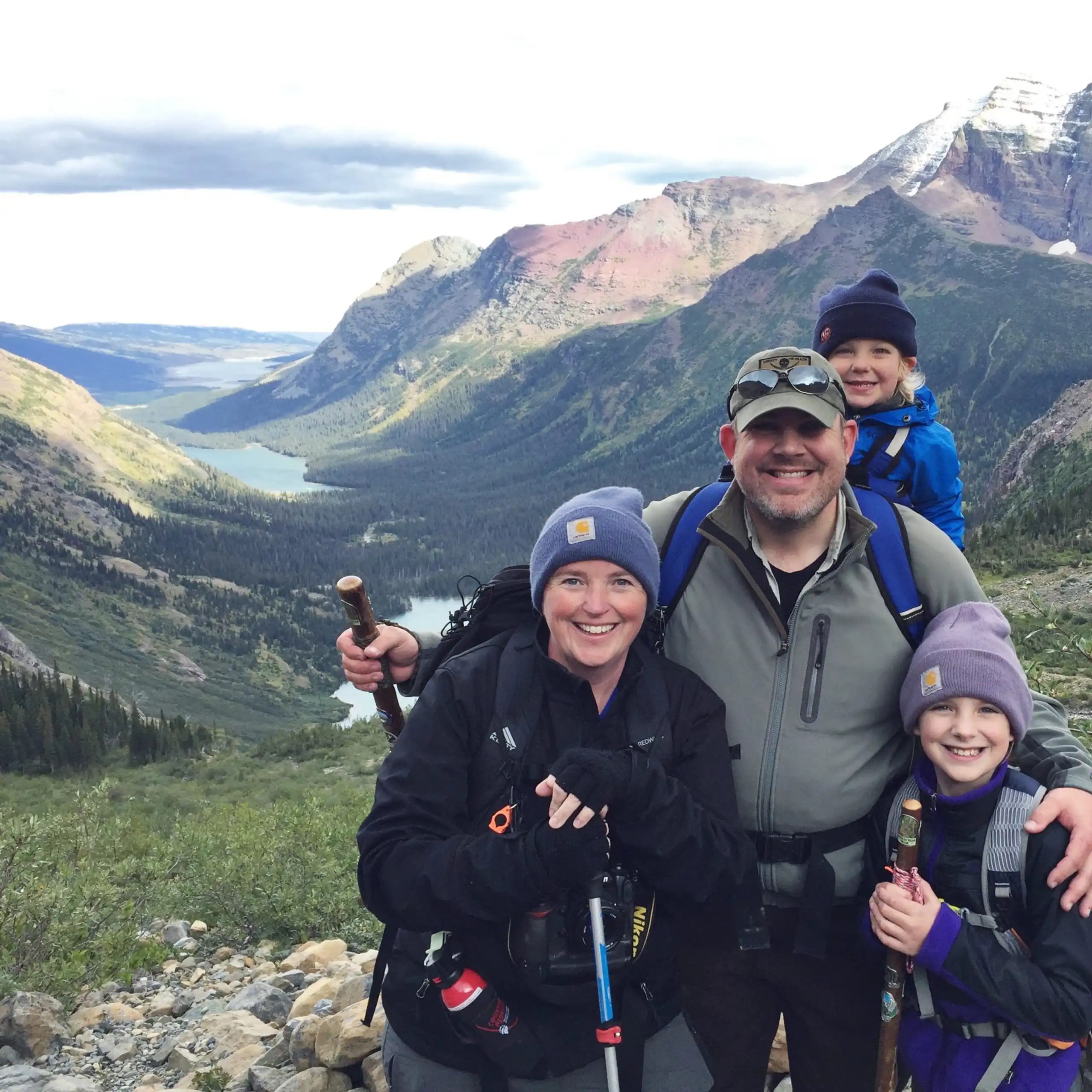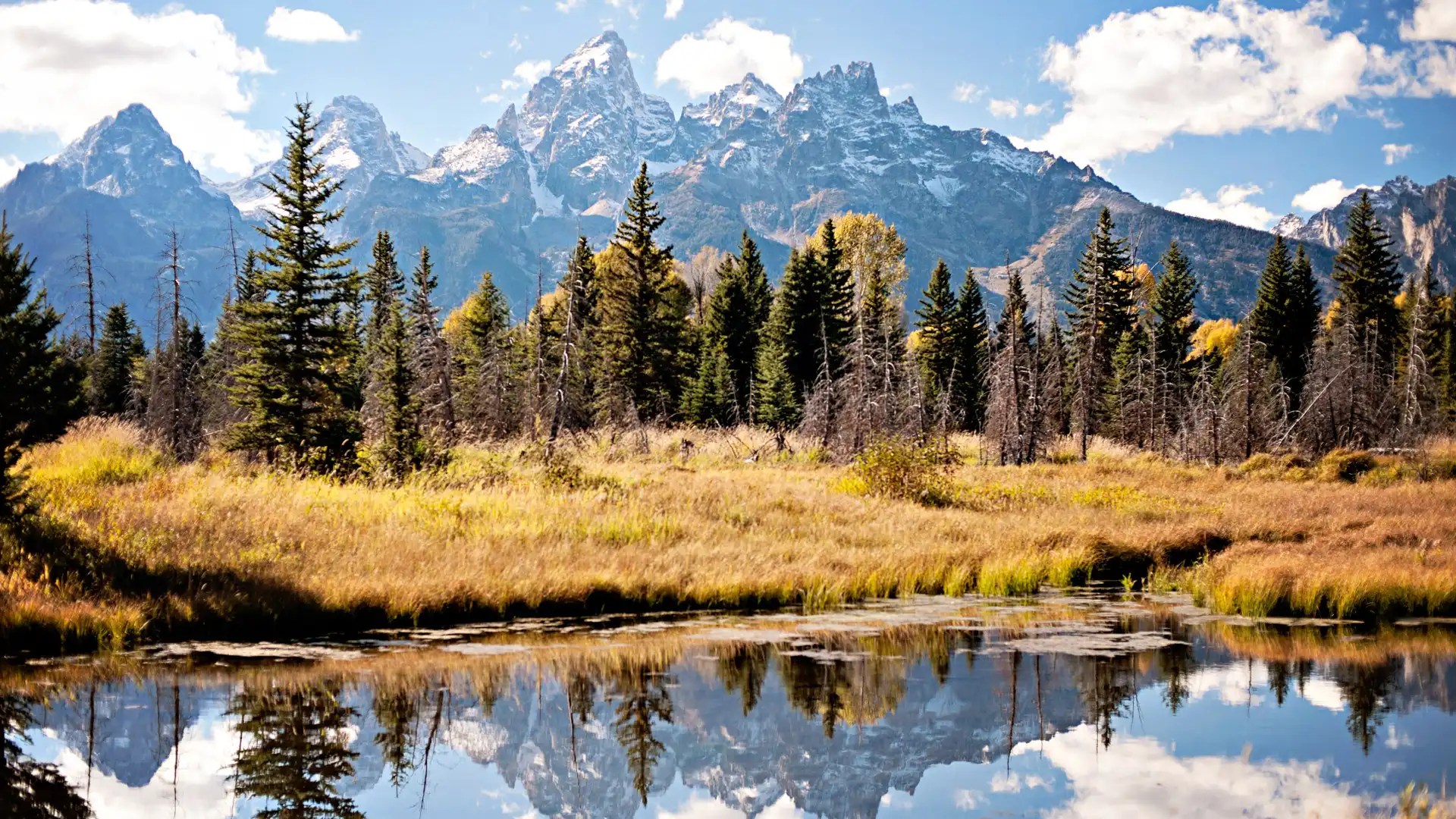
Going camping with your family is simple and fun. You can get started in these seven steps.
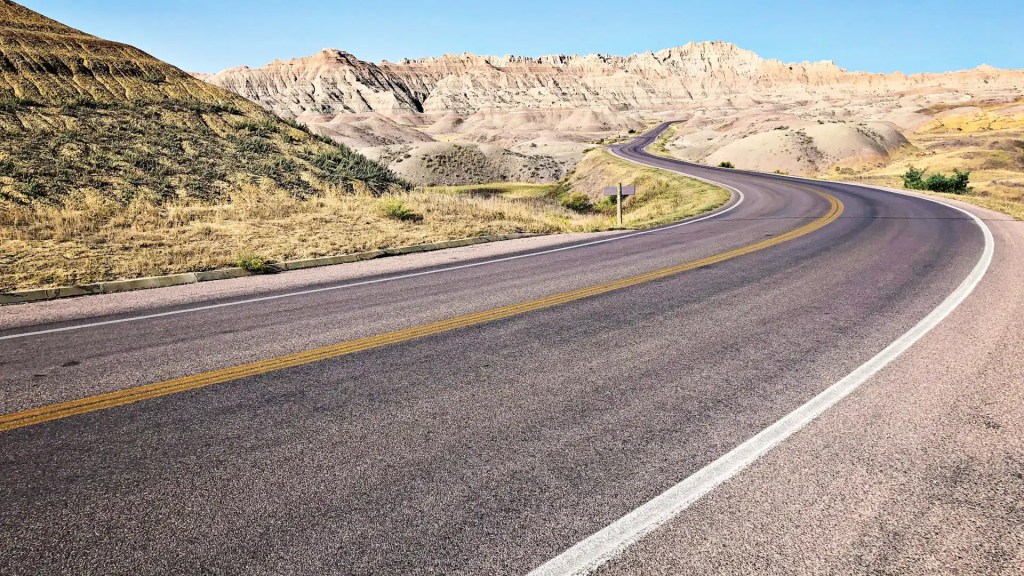
Start
Instead of waiting or researching more, get started now. You won’t ever have all the answers, or even many of them, until you get out there with your own family and figure out what works — and what does not work — for you. The guide to your family having success as campers has not been written yet, but you can write it through some thoughtful trial and error and good record keeping. Every family is unique, and for each family there is an ideal balance of comfort, fun, adventure, and challenge. No matter the ages of the children involved or the lack of experience of the adults, everyone can enjoy camping! Be comfortable with the idea that you will make some mistakes but that you will all learn and grow from them — and just get out there. You won’t ever be ready until you start.
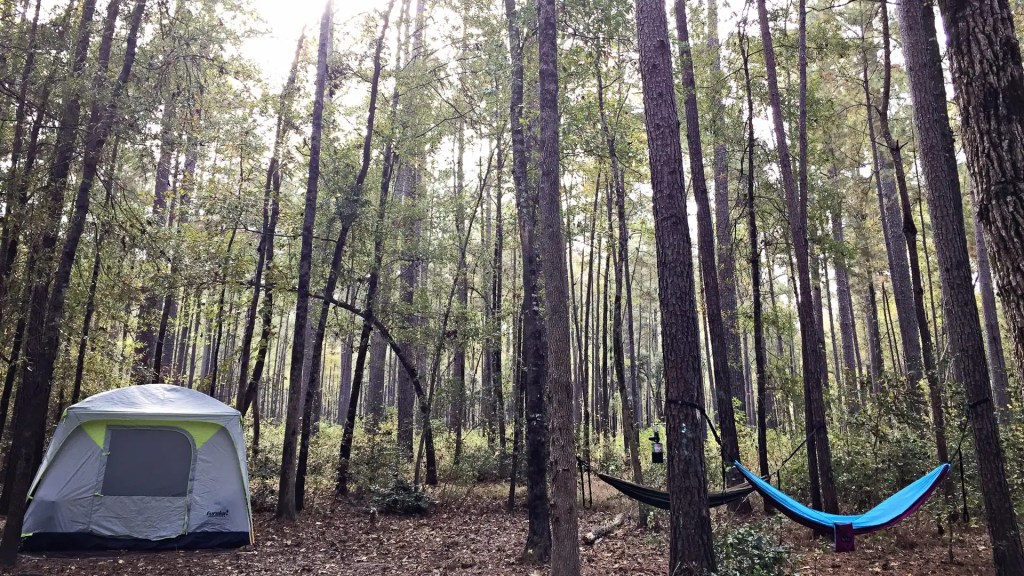
Be realistic
For most people, buying an RV isn’t an option as a way to start camping, so be realistic about what is attainable and what is advisable. Many people who purchase RVs “planning to start camping” never really do and often end up selling them after a year or two of disuse and storage fees. Start small instead. Buy a tent, not an RV, and set a realistic goal: we will camp once a month, every other month, once a quarter, etc., and then keep it. Be realistic in your expectations of your family as well. Any new skill or hobby takes practice. As you grow in your love of the outdoors, you may very well want a tent trailer, travel trailer or a motor home, but by starting small you will have a much better chance of selecting the exact right option for your family and then using it well.
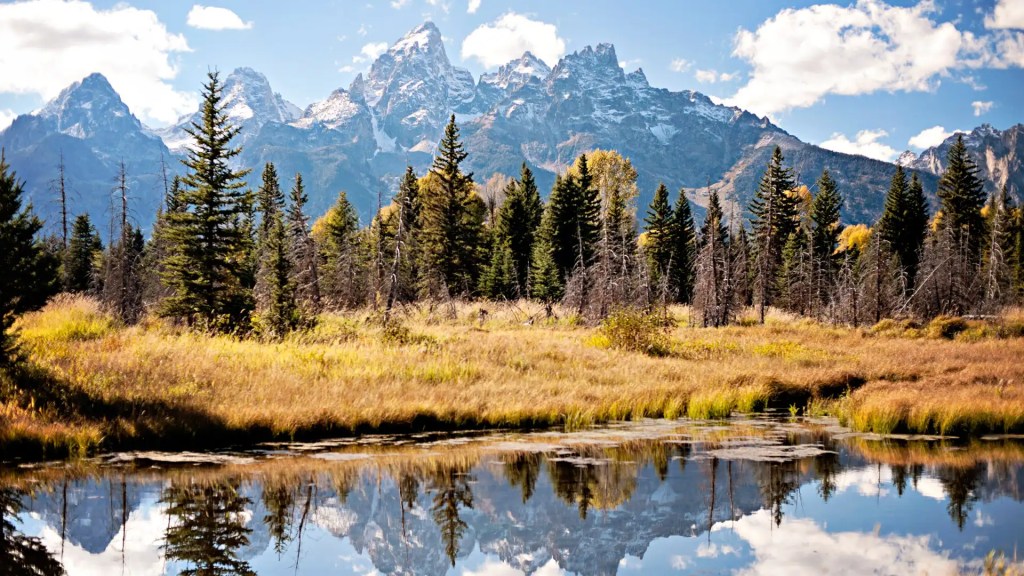
Dream on
Get online and research national and state parks in your area and around the country. Post a map on the wall and circle places of interest. When you find something you love, make a reservation and start planning. Go ahead and make another reservation at the interval you plan to camp. Get your family involved in the selection and planning process. Start a camping binder and keep ideas in it. Set up your tent at least one time before you go somewhere with it, and maybe even spend a night in the yard dreaming of all the places you will go. Make bucket lists and have everyone contribute — don’t just dream, dream big and then make actual plans. You can always cancel a reservation if necessary, but keeping them booked and on the calendar is a practical way to make dreams a reality.
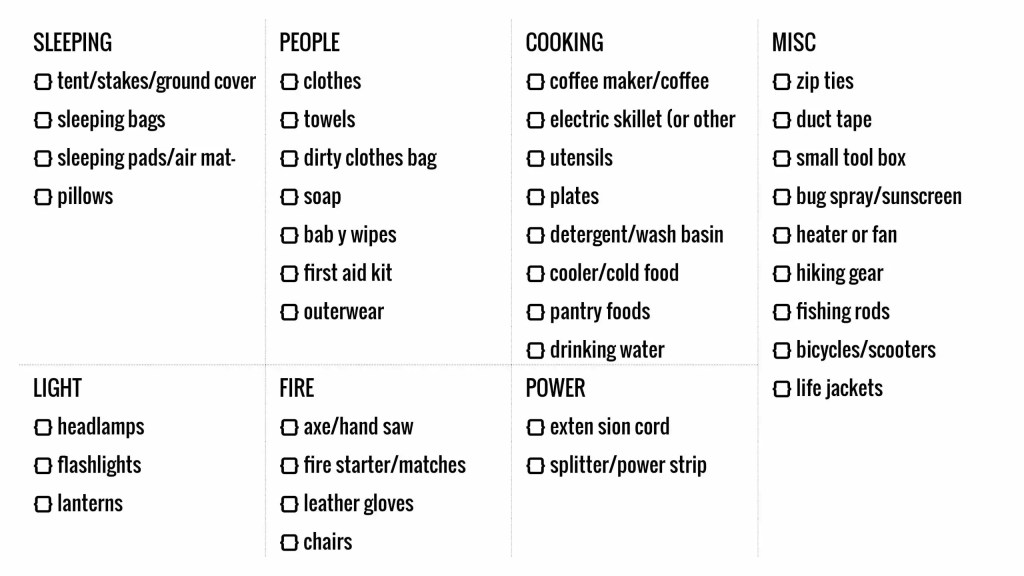
Make lists
Think of what you might need to be able to sleep, eat, make a fire, and have power and light. Think about whether or not you want to camp in places that have power and water available in their campsites and how that affects those lists. For the most part, state parks have power and water at each campsite and national parks do not. There are exceptions to this, of course, but that is the general rule. Park websites have all of this information available, along with whether or not they have flush toilets and showers and other features and amenities. Most people benefit from starting out with these things available and then can gradually transition to a more rustic experience. Keep packing lists in a file on your computer so that you can add to them and make changes as you experiment. There’s nothing worse than solving a logistical problem and then forgetting what you did when you start planning your next trip! Here is a very simple list for getting started. It will grow over time as you add gear, personal preferences, comfort items, and problem-solving solutions, and it will vary based on your destination.
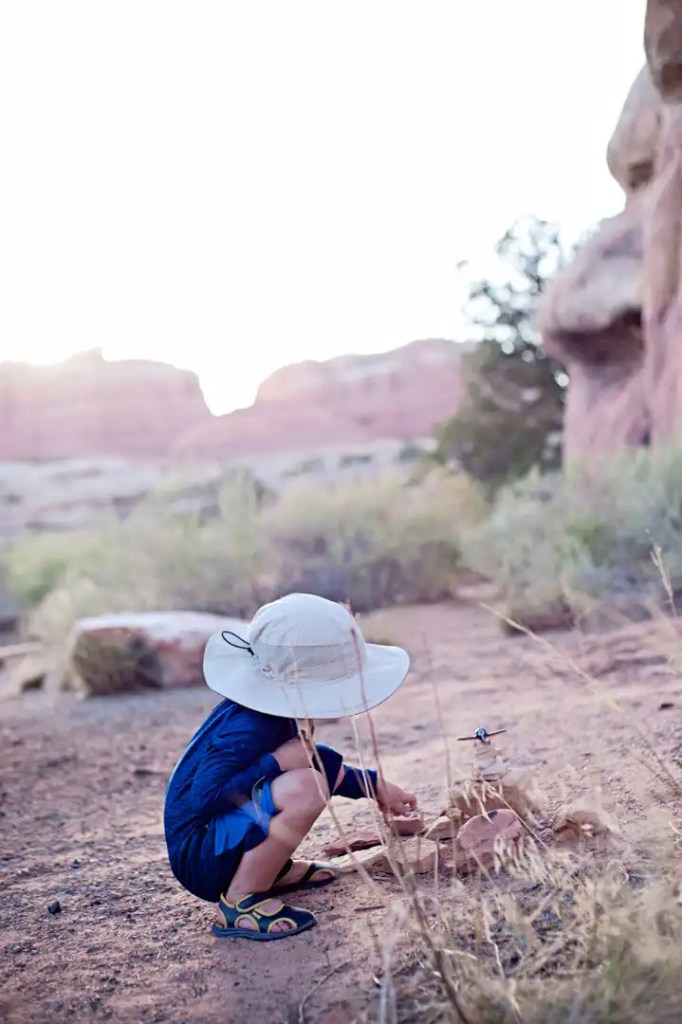
Keep it simple
When you start purchasing gear, be practical and keep it simple. Think in terms of items that would be practical to have in your home when the power goes off or in an emergency. Camping gear is a wonderful asset to have available in many different circumstances. Buy as few things as you need to meet the basic requirements of your initial list. A simple tip for this would be to camp somewhere with a power hookup available, include extension cords in your packing and take a kitchen appliance or two with you to test (coffee maker, electric skillet, hot plate, slow cooker, etc.). You don’t need to buy a lot of camping-specific gear right off the bat. In fact, you shouldn’t. Until you really get started, you don’t know what you will like. If you plan to cook, plan a simple menu that allows you to use one appliance, like an electric skillet or slow cooker, to cook all meals. Keeping things simple makes you more likely to have fun when you camp and buy the right things when you do buy.
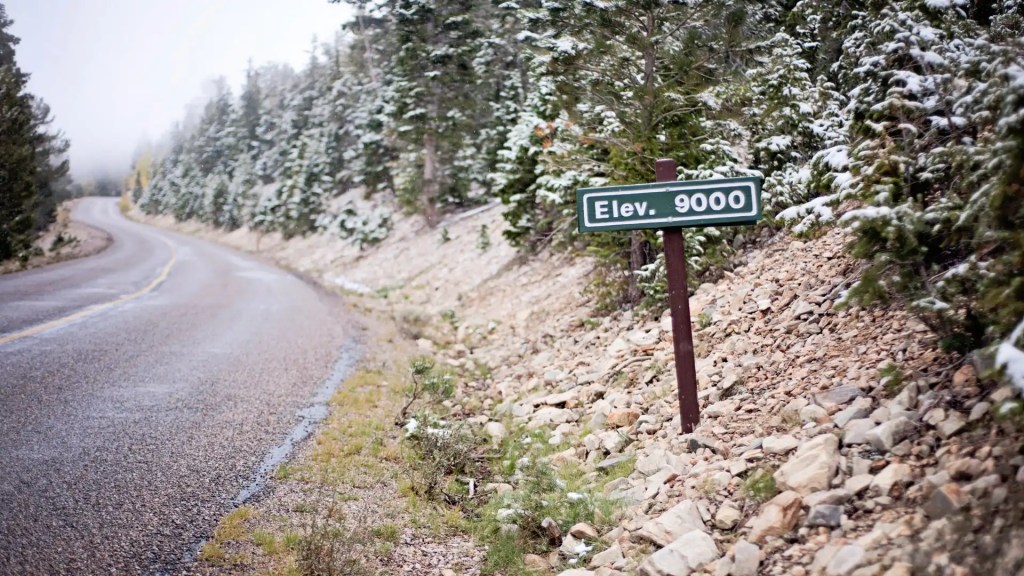
Be flexible
Things will go wrong. The weather will be bad. Parks will disappoint. Kids will struggle. Be frank about disappointments but don’t get lost in them. Take the unexpected in stride with a great attitude and be flexible and creative with your problem-solving. After all, this is a big part of what calls us into the outdoors with our families — we are team building. Major corporations spend thousands of dollars taking teams out into the wilderness so that they learn these very same skills and become better teammates and employees. The most important team we will ever form is our family, and these activities benefit the family just like they benefit corporations. Invite the rest of your family into the process and model it as you grow. Being familiar with your destination is helpful when flexibility is needed, do research and have some knowledge about what is in the area. On a cold, rainy day, a trip out for a hot meal and a tour of a local museum or coffee by a fireplace in a historic lodge can be just as enjoyable as the great hike you had planned. Sometimes an unexpected and unwanted rainy day becomes a winter wonderland at the top of a mountain — it’s truly amazing how often an unexpected change in plans results in the best memories. One of the most important travel values I learned from my mom was to have the perspective “we’ll get it next time” when things don’t work out like we hoped, which always keeps your eyes forward, your attitude flexible and prevents you from dwelling on disappointments.
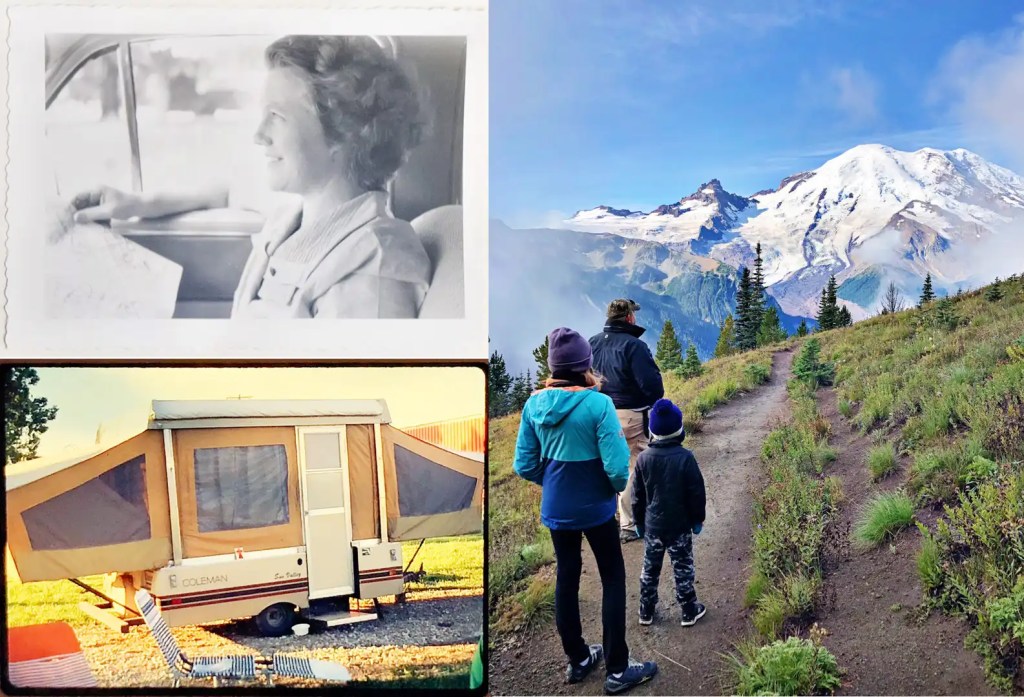
Stick with it
It’s not easy to give up all the comforts of home and put yourself into new environments. It may feel awkward or uncomfortable or even scary, but that is just part of the growing process. As you grow, you will discover one of the greatest things about the outdoors is that there is always more … more to see and do, even at a place you know well. Camping may lead to off-roading or backpacking or rock climbing, activities you can’t even imagine loving right now. Stick with it and you will soon find you have comfort and ease out in nature along with a variety of new favorite and ever-expanding hobbies. As you start, don’t think that everyone who loves to camp now loved it the first time they went, or even the second. Most of us didn’t. Stick with it and you will fall in love — and so will your family. The concept of the great American road trip and the wonder of America’s national parks creates generational legacies in families. When we have our own children, we are called back to the same parks where our parents took us as children.

